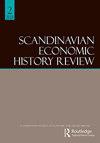两次世界大战期间波罗的海国家的死亡率转变:新生命表的跨国比较结果
IF 0.5
Q4 ECONOMICS
引用次数: 1
摘要
本文首次对两次世界大战期间波罗的海三国的死亡率转变进行比较分析,作为人口转变的一部分。我们解决了以下研究问题:哪种类型的死亡率转变是两次世界大战期间波罗的海国家死亡率模式的例证?死亡率的转变在二战之前就已经完成了吗?波罗的海国家在死亡率和人口结构转型方面存在哪些差异?我们展示并使用了1925–1934年立陶宛新构建的生命表,并借鉴了爱沙尼亚人口学家Kalev Katus(1955–2008)的工作,他于1925–1938年首次出版了拉脱维亚的生命表。主要结论:这三个国家是西方死亡率转变模式的一部分。然而,立陶宛的婴儿和儿童死亡率下降滞后。爱沙尼亚和拉脱维亚大陆的育龄妇女由于生育率下降较早,由于出生并发症死亡率下降,预期寿命延长。尽管如此,到第二次世界大战时,这三个国家的死亡率转变仍然不完整。对1925年至1939年的死因进行比较可以证实最后的结论。本文章由计算机程序翻译,如有差异,请以英文原文为准。
Mortality transition in the interwar Baltic states: findings from cross-country comparison of new life tables
This paper is the fi rst comparative analysis of mortality transition, as part of the demographic transition, in all the three Baltic countries during the interwar period. We address the following research questions: Which type of mortality transition is exempli fi ed by the interwar Baltic countries ’ mortality patterns? Was the mortality transition completed already before WWII? What were Baltic cross-country di ff erences in the advancement of mortality and demographic transitions? We present and use newly constructed life tables for Lithuania, 1925 – 1934, and draw on the work of the Estonian demographer Kalev Katus (1955 – 2008), publishing for the fi rst time his life tables for Latvia in 1925 – 1938. Main fi ndings: The three countries were part of the Western model of mortality transition. However, the reduction of infant and childhood mortality was lagging in Lithuania. Women of childbearing age in Estonia and mainland Latvia, as a result of earlier fertility decline, experienced longer life expectancy due to the decreased mortality from birth complications. Nevertheless, in all three countries mortality transition was still incomplete by WWII. A comparison of death causes in 1925 – 1939 serves to corroborate the last conclusion.
求助全文
通过发布文献求助,成功后即可免费获取论文全文。
去求助
来源期刊

SCANDINAVIAN ECONOMIC HISTORY REVIEW
ECONOMICS-
CiteScore
1.60
自引率
16.70%
发文量
20
期刊介绍:
Scandinavian Economic History Review publishes articles and reviews in the broad field of Nordic economic, business and social history. The journal also publishes contributions from closely related fields, such as history of technology, maritime history and history of economic thought. Articles dealing with theoretical and methodological issues are also included. The editors aim to reflect contemporary research, thinking and debate in these fields, both within Scandinavia and more widely. The journal comprises a broad variety of aspects and approaches to economic and social history, ranging from macro economic history to business history, from quantitative to qualitative studies.
 求助内容:
求助内容: 应助结果提醒方式:
应助结果提醒方式:


